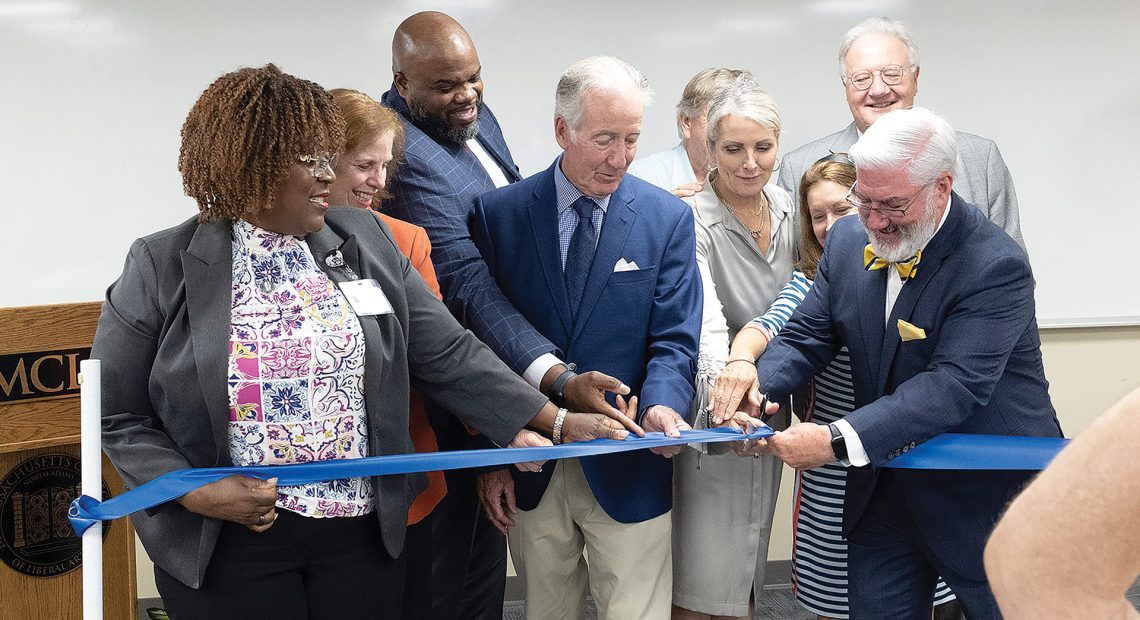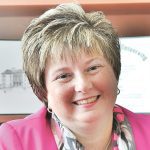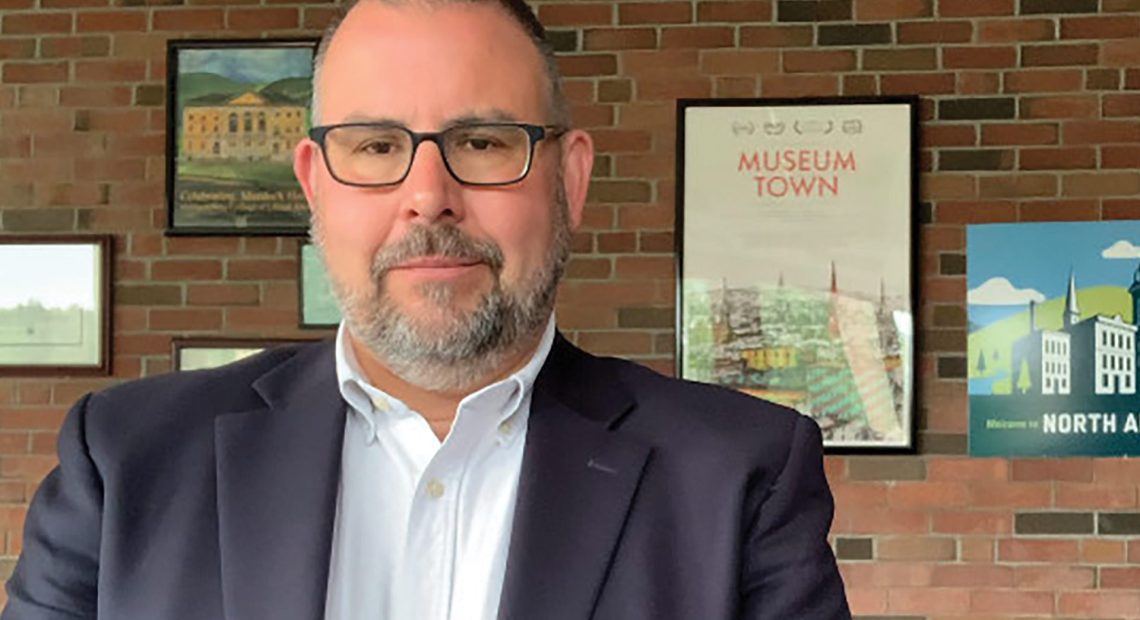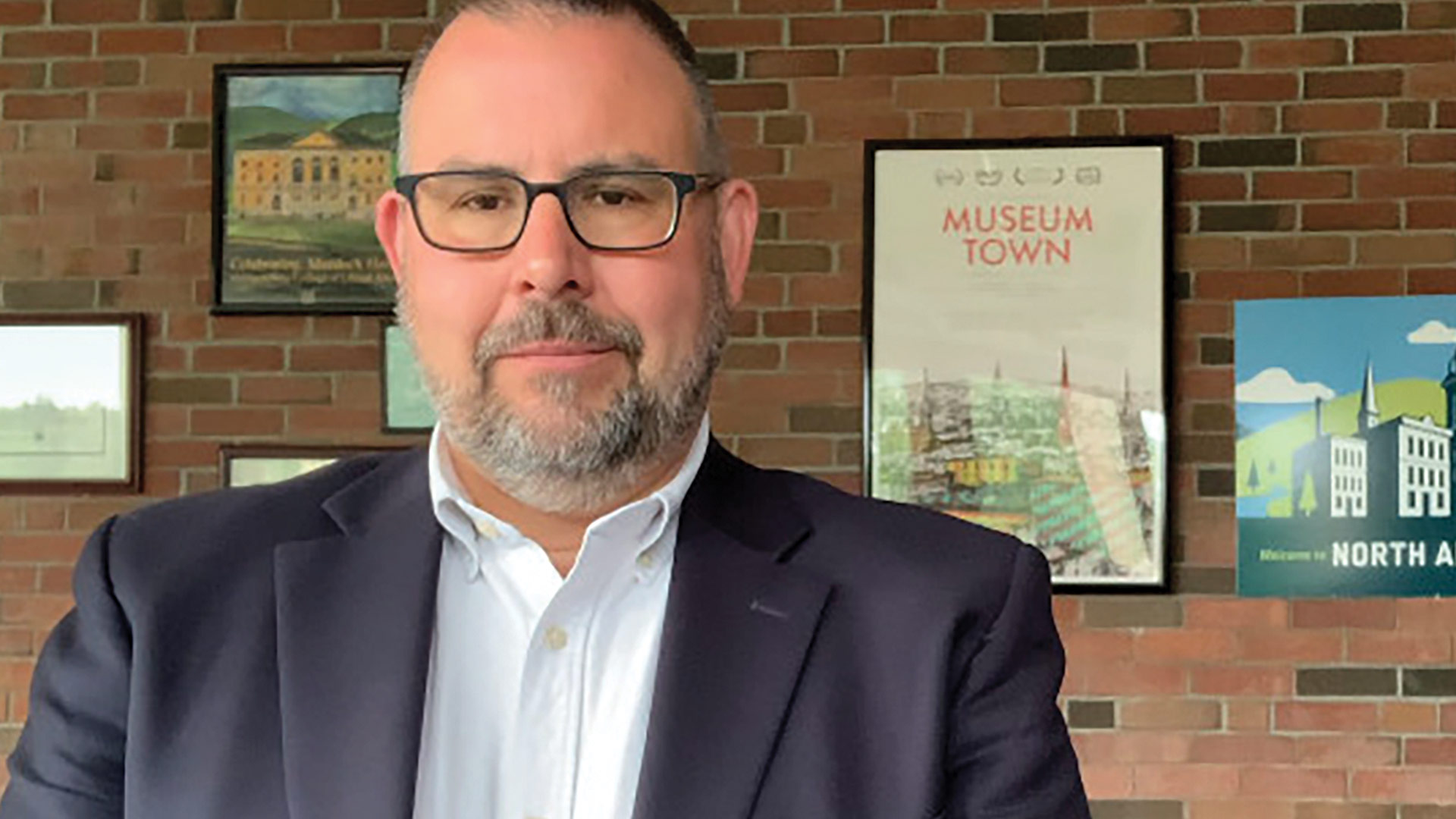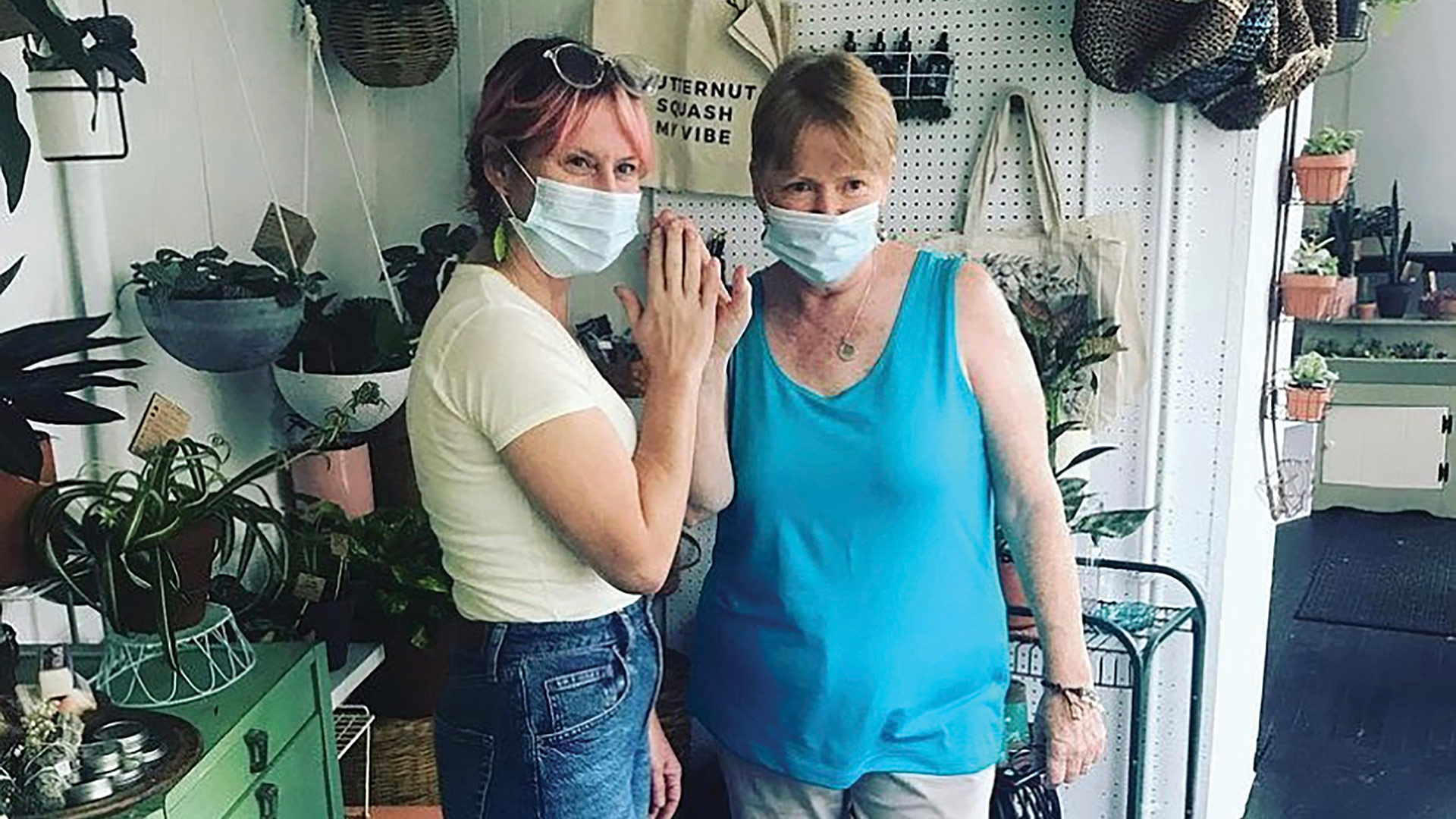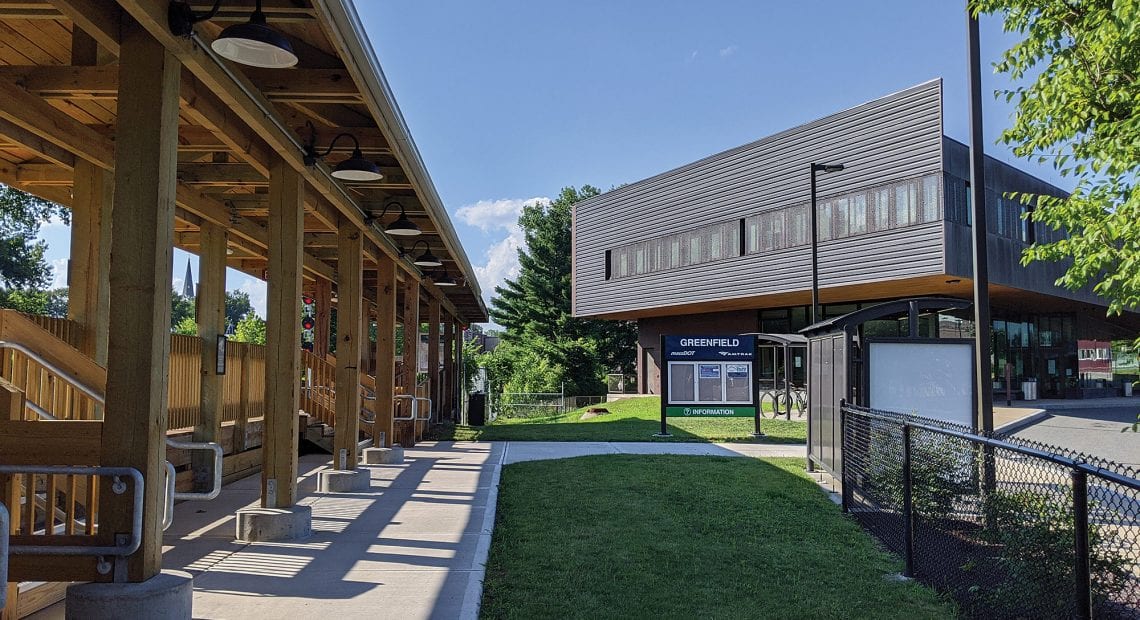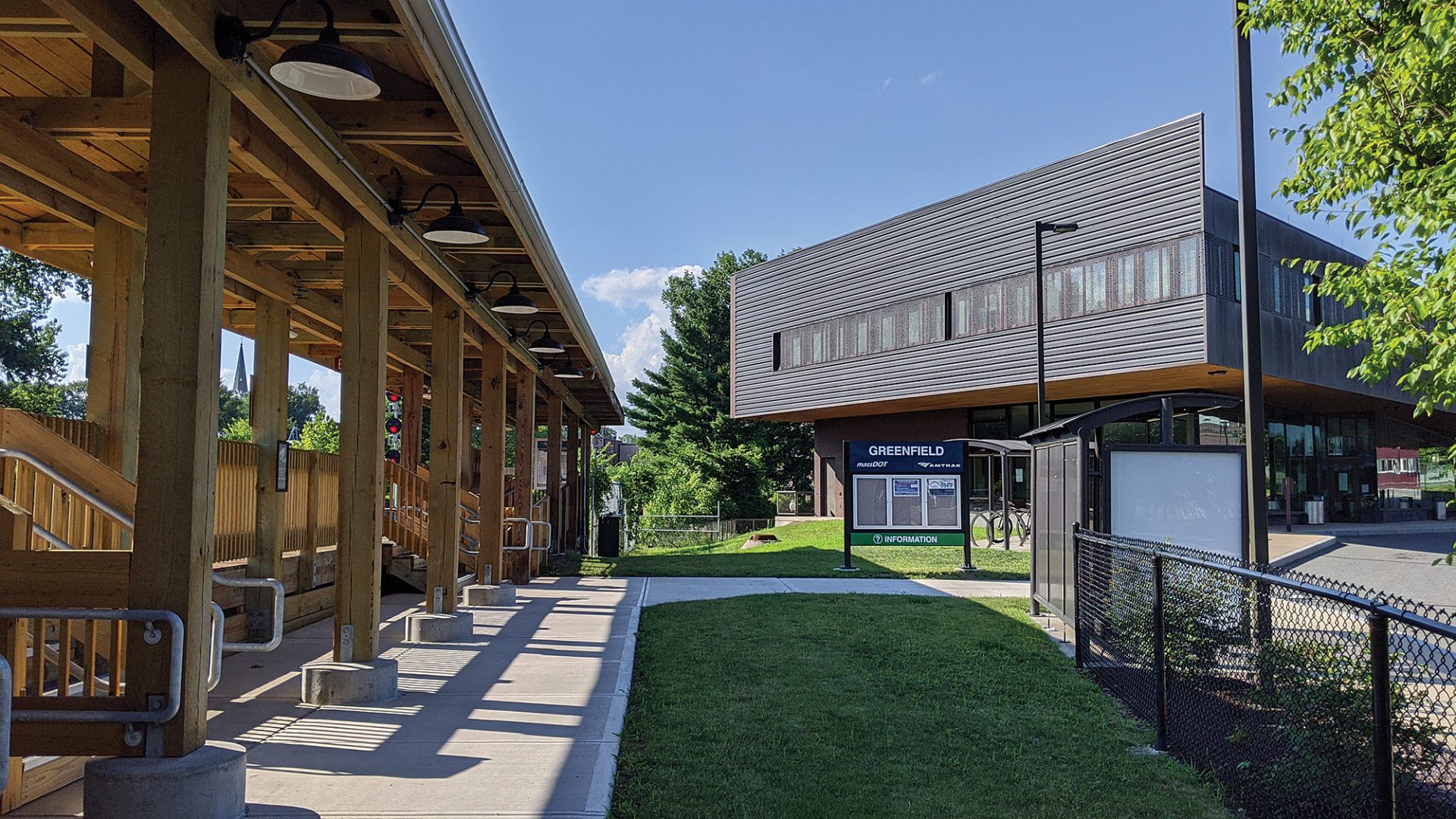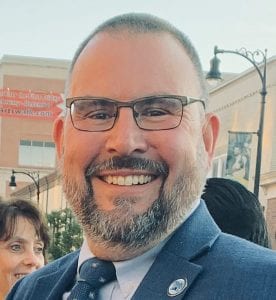Community Spotlight
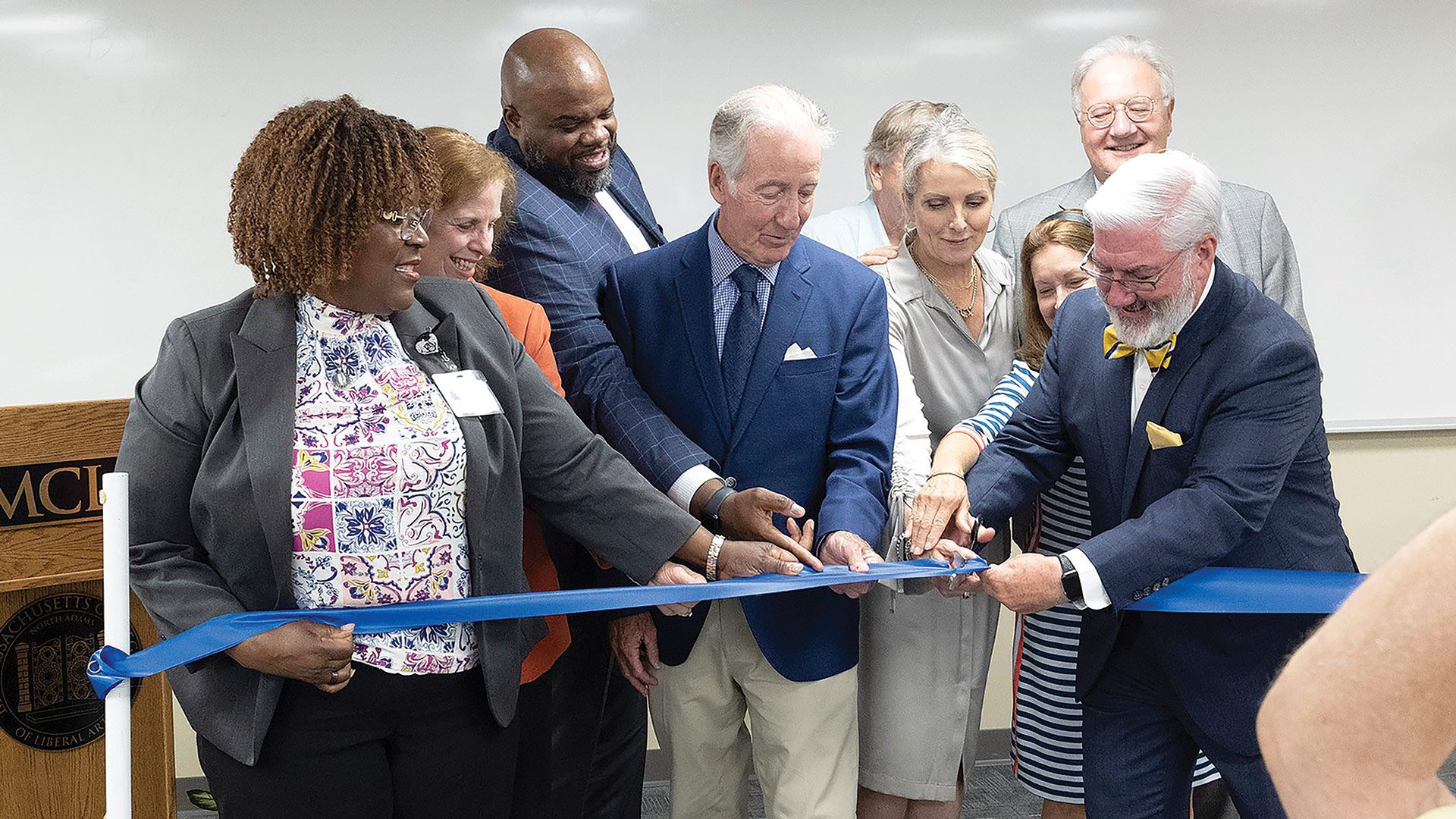
MCLA President James Birge cuts the ribbon at the official launch of the school’s new nursing program.
Jennifer Macksey grew up North Adams, and she’s seen some profound changes in her 50 years — and from many perspectives.
As a young girl, she remembers Thursday nights downtown, which would be bustling as the thousands of employees at nearby Sprague Electric would be out spending their paychecks in the stores, like the one owned by her parents, and restaurants along Main Street and connecting corridors. She also remembers how the landscape changed dramatically, and the vibrancy downtown all but disappeared overnight, after Sprague closed its doors in 1985.
Later, while serving in several positions in City Hall, including chief financial officer and treasurer and collector, and also at the nearby Massachusetts College of Liberal Arts (MCLA) and Southern Vermont College, and then as assistant superintendent of the Northern Berkshire Regional School District, she saw the city’s economy struggle as it also evolved, from one dominated by manufacturing to one centered on tourism and the arts, a shift exemplified, in dramatic fashion, by the transformation of the former Sprague Electric complex into MASS MoCA, the nation’s largest museum of contemporary art, which opened its doors in 1999.
Today, Macksey is mayor of the city, a post she has long coveted (more on that later), and is thus in a position to not only observe, but also shape the ongoing evolution of this city of nearly 13,000.
She reports progress on several fronts, from new stores downtown to signs of development at the long-vacant former TD Bank building on Main Street; from a cannabis-cultivation facility in the Hardman Industrial Park to a small but quite significant rise in population — part of a countywide phenomenon involving residents of large metro centers leaving for the Berkshires, where many of them are working remotely.
Jennifer Macksey
“We’ve brought a lot of new people into the community, but we’re also focused on getting businesses in here.”
“I’m amazed at the people who are buying property here in North Adams,” Macksey said. “We’re seeing a lot of people who are leaving larger cities and coming here to work remotely, and we’re seeing out-of-town investors buying up property, whether it be for long-term or short-term rental. So our population is starting to go up a bit.”
James Birge, long-time president of MCLA and another native of Berkshire County (he grew up in Lee), has also seen a number of signs of progress, both across the county and in North Adams. In addition to meeting its mission of providing a quality liberal-arts education and enabling students from low-income families to live “an elevated life,” as he calls it, MCLA is helping to fuel a changing Berkshires economy by providing qualified workers and also adding new programs to meet recognized need, such as its new nursing-degree program.
“While 40% of our students come from Berkshire County, 50% of our students who graduate stay in Berkshire County,” he said. “So we’re contributing to the brain gain of Berkshire County.”
The nursing program, initiated this fall, was launched in response to a request from Berkshire Health Systems to help meet an urgent need to put more nurses into the pipeline.
“We thought, ‘here is an opportunity where we can develop an academic program that would be in demand and be responsive to the needs of our community,” Birge said, adding that the program started with 20 students this fall and is expected to ultimately grow to 110-120 students. “This is the fundamental, historic purpose of public higher education — to respond to the needs of the community.”
For this, the latest installment of its Community Spotlight series, BusinessWest takes an in-depth look at North Adams and the many developing stories there.
Taking the Lead
While growing up in North Adams, Macksey said, her parents always stressed the importance of both giving back and getting involved, qualities she has embraced her whole life.
This passion, coupled with a desire to lead change in a community she said was still struggling in many ways, prompted her to run for mayor in 2021 — and to seek re-election this fall.
“I always wanted to be mayor,” she told BusinessWest. “When I left City Hall, I knew that I would come back someday, but I always said I would come back to the corner office, and that’s what I did. I’m very interested in keeping North Adams moving forward.”
Her focus is broad and covers many issues, from education to public safety, but especially economic development, she said, adding that, like all communities in the Berkshires and beyond, the most pressing need is jobs.
“We’ve brought a lot of new people into the community, but we’re also focused on getting businesses in here, and that is really the charge of my next two years in office, to build out some economic-development plans and to sell North Adams more than it has been.
“North Adams is sold on its beauty and its natural resources, but there are a lot of other things to offer,” she went on. “I’m very focused on the buildings that we do have that are empty and our industrial park and exploring opportunities to bring in some light industry.”
The Hardman Industrial Park recently became home to the Temescal Wellness cannabis growing facility, in a facility that formerly housed Crane Stationery. The facility employs between 75 to 100 people and is thus an important source of new jobs and one of many investments that have taken place in North Adams.
Others include ongoing investment in the Porches Inn at MASS MoCA on River Street and also in the Hotel Downstreet on Main Street — facilities that are catering to the steady volumes of visitors to North Adams, which has increasingly become a destination in recent years — as well as redevelopment of the former Johnson School into much-needed housing.
North Adams at a Glance
Year Incorporated: 1878
Population: 12,961
Area: 20.6 square miles
County: Berkshire
Residential Tax Rate: $17.67
Commercial Tax Rate: $37.60
Median Household Income: $35,020
Family Household Income: $57,522
Type of government: Mayor; City Council
Largest Employers: BFAIR Inc.; Massachusetts College of Liberal Arts
* Latest information available
In the downtown, most of the storefronts are now occupied, Macksey said, and the former TD Bank facility has been acquired, and redevelopment plans are being blueprinted.
“Our downtown is pretty much full,” she noted. “There were many years when it was empty, and I really applaud the owners of those buildings for hanging in there.”
But there is considerable work to be done, she added. “We’ve got a lot of things going on, but we really need to provide more jobs for our workforce here. And we hope to develop some economic-development plans that will bring some people into the city.”
Creating jobs is a process, she noted, one that involves collaboration and partnerships with business, the education sector, and workforce-development agencies, as well as that notion of more aggressively selling the city and its many types of assets and generating new investments in the community.
“We need to create some jobs that provide some on-the-job training,” she said, citing Temescal Wellness as one example of such an employer. “We also need to be collaborating with places like MassHire and other groups to create opportunities where people can learn a trade as they work.
“And we also need to be aggressive in cultivating a community, even in our high school, of students who want to work here in North Adams, be it in a trade or in an administrative position,” Macksey went on. “But most importantly, we’re looking to work with businesses that are sensitive to hiring people here in North Adams.”
Class Act
Birge told BusinessWest that he thought MCLA might fall a little in the annual U.S. News & World Report ranking on the nation’s public liberal-arts colleges, a category that includes the service academies. But it didn’t.
Instead, it held its place at number 7 — this was the third year in a row it finished in that spot and the ninth year in a row it has cracked the top 10, out of roughly 500 institutions — a measure, he said, of not only the school’s commitment to excellence, but its ability to consistently deliver on its commitment to providing a quality liberal-arts education.
As proud as Birge might be of this ranking — and he is quite proud — he is even more satisfied with the school’s rankings on U.S. News & World Report’s listing of top performers when it comes to social mobility, a category the publication initiated in 2019. This is a measure of how well institutions graduate students who receive federal Pell grants, typically awarded to students whose families earn less than $50,000, though most Pell Grant money goes to families with income below $20,000.
In this category, MCLA ranked first in the state and second in the country.
“I like this ranking a little bit more, because we’re meeting our mission — we have a mission of access,” he explained. “We want students who may not be able to afford to go to other institutions to come here and get an outstanding education and then go off and have a life that they wouldn’t have if they didn’t come to us.
“I think that’s a more important measure; we’re the highest-ranked public institution in Massachusetts and the second-highest in the nation, and we’re really proud of that,” he went on, adding that one-third of the school’s students come from families earning less than $30,000 per year, and roughly 40% of them are first-generation college students.
“The average starting salary for an MCLA alum is $46,000,” he went on. “Hundreds of students are graduating and making an average salary of $46,000, and they’re coming from families that made less than $30,000. We’re breaking the cycle of poverty for hundreds of kids in four years — we think that’s a pretty noble mission for a public higher-education institution.”
Overall, MCLA is seeing a surge in enrollment due to a roughly 15% increase among first-year students (total enrollment is largely flat), and Birge attributes this to the value the school presents at a time when value has become an ever-more-important factor among students and their parents. Indeed, one can graduate from MCLA with a fraction of the debt they may assume if they were to attend a private liberal-arts college, he said.
While on the subject of value, Birge said a liberal-arts education still holds plenty of value in this job market and in general, despite growing rhetoric questioning the relative worth of a liberal-arts degree, and some colleges and universities — Simmons and Lasell are among the latest to do so — cutting liberal-arts majors, including history, modern languages, philosophy, and literature because of low enrollment.
“I think those institutions that are cutting liberal-arts programs are not being very visionary, and I think they’re cutting off their nose to spite their face,” he added “In our world today, even more than ever, we need people educated in the liberal-arts tradition. We need people who can understand different perspectives and look at things through different lenses.”
Especially in a changing Berkshire County, he noted.
“The economy has changed; it used to be an industrial economy, and now it’s more of a creative economy, across the county,” Birge said. “And I think that has breathed life back into a lot of our communities, including North Adams. It’s a vibrant moment in the history of Berkshire County, and we try to be as participatory in that as we can.”



